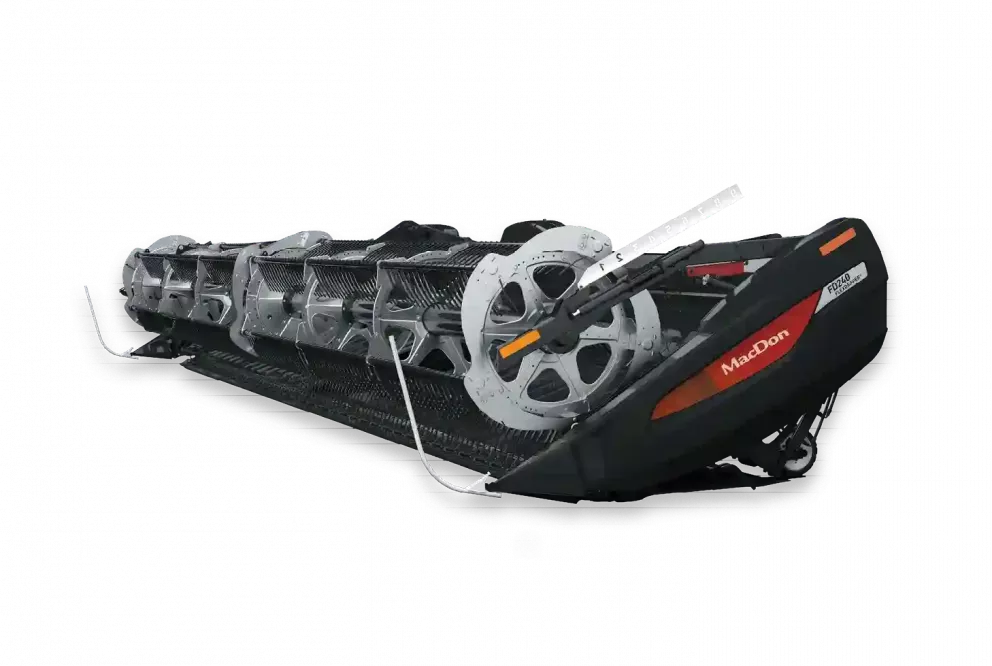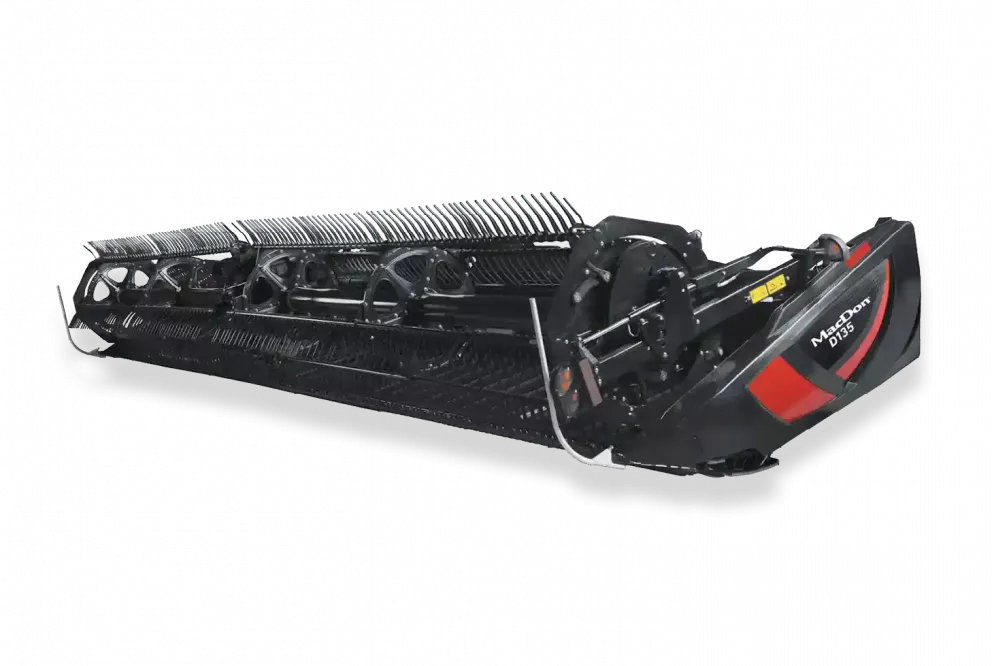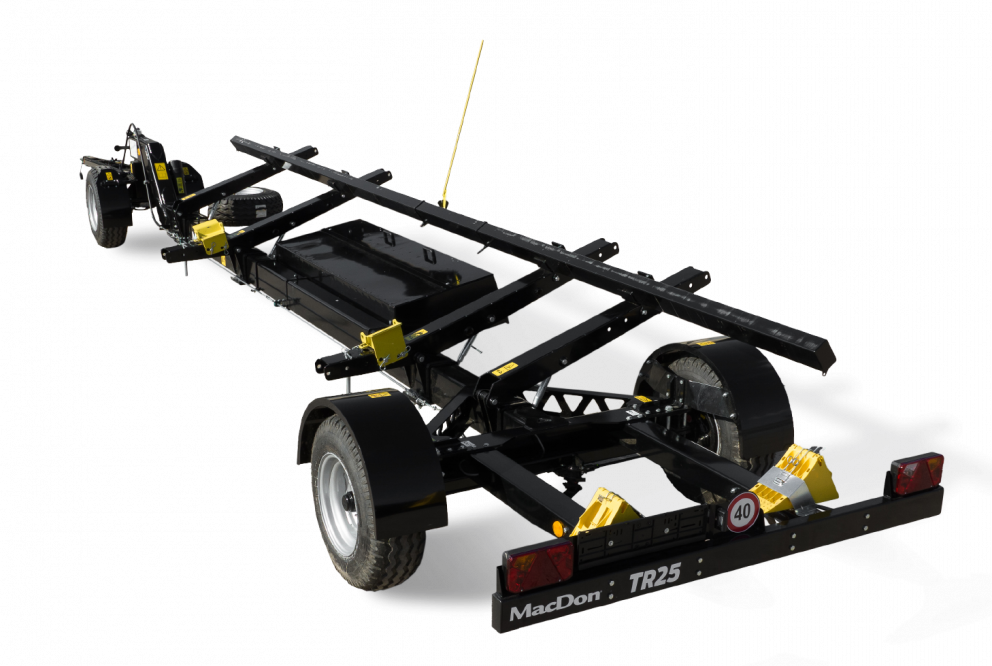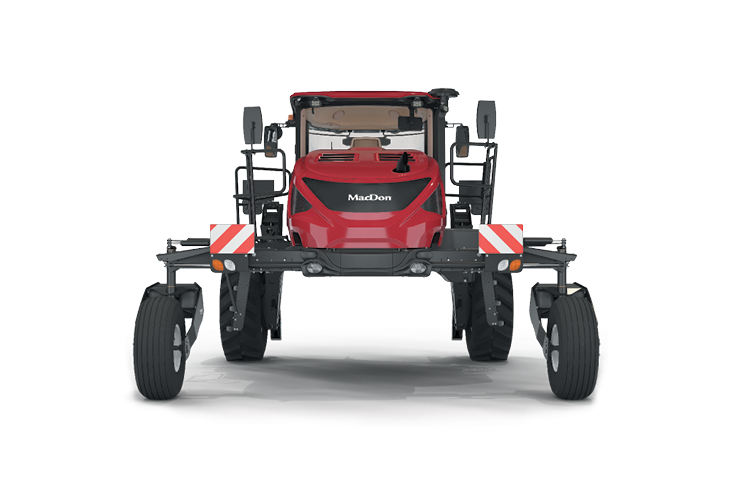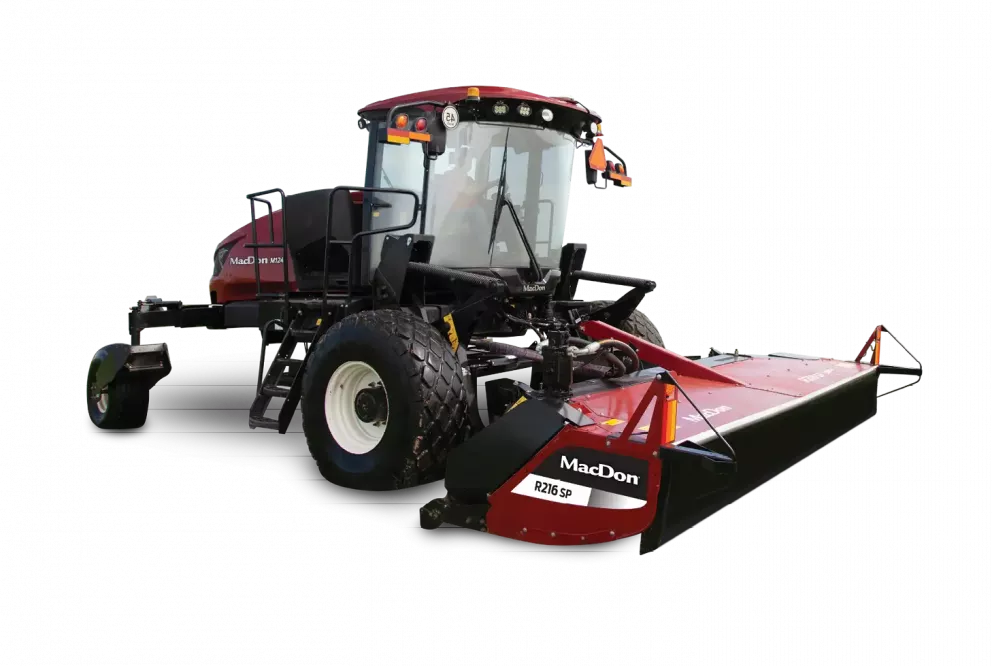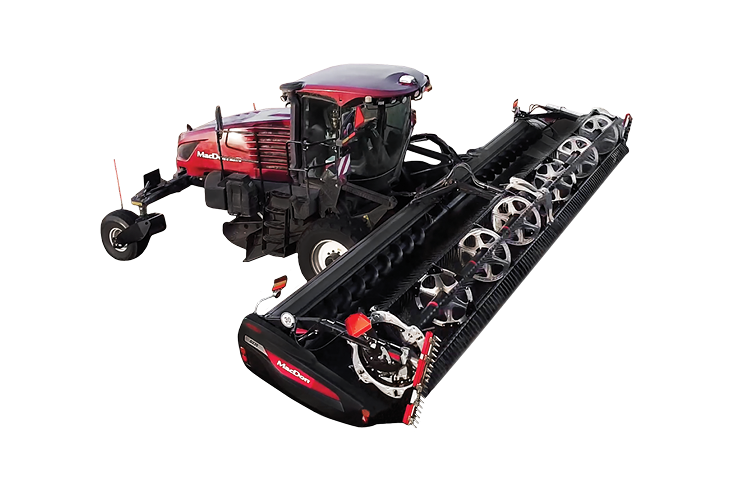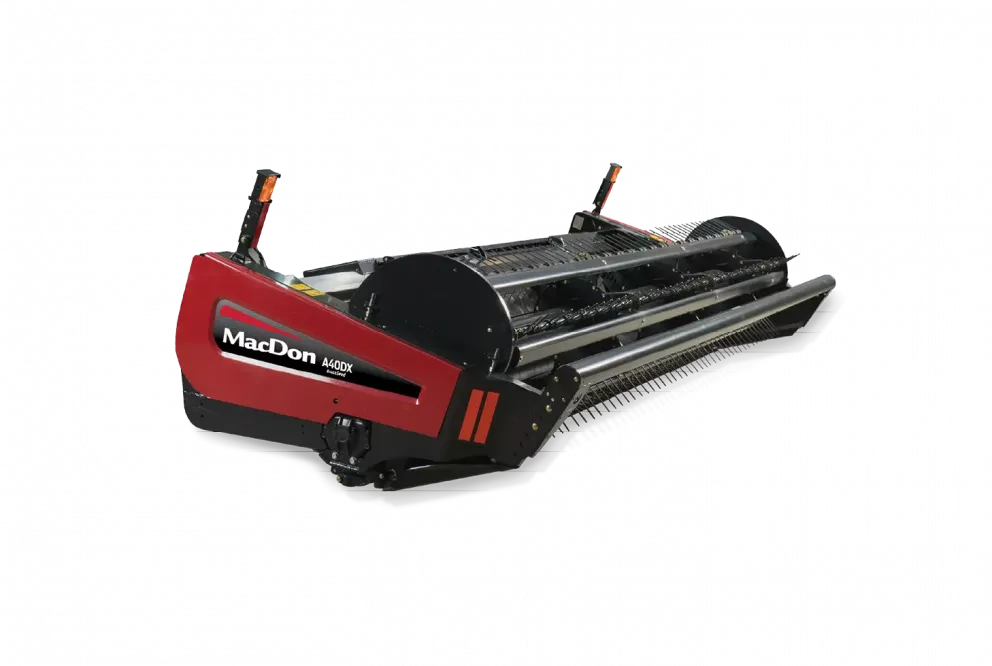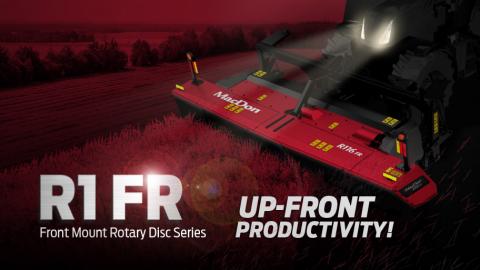For the Record
New Zealand farmer Warren Darling brings in world record harvest.
ONCE WE DECIDED WE NEEDED A FLEX HEAD, ALL WE WANTED WAS A MACDON®.
The Guinness Book of Records was originally created by Guinness Breweries as a way to settle debates that frequently arise in pubs over a few pints of beer. So it’s only fitting that one of the more than 40,000 achievements it chronicles concerns the primary ingredient of Guinness Stout, barley.
Up until this year the world record for the highest barley yield was 12.2 tonnes a hectare (226.94 bus/acre), a record that had stood since 1989. But in 2014, New Zealand farmer Warren Darling had a spectacular harvest that came in just shy of that record at 11.5 tonnes a hectare (213.92 bus/acre), and that started him thinking.
“We knew there was a record for wheat because it is held by a New Zealand farmer,” said Warren Darling from his farm just outside the port
city of Timaru on New Zealand’s South Island. “So we looked in the Guinness World Records to see if there was one for barley and saw how close we were. That’s when we decided to give it a crack and see if we could beat it.”
Darling’s 1,112 acre (450 ha) Poplar Grove Farm is located just south of Timaru, and runs about 1.9 miles (3 km.) along the coast and 1 mile (1.6 km) inland. Here he grows barley, wheat and rapeseed (canola) on land that is fairly rolling with a good clay base.
“Cereals such as wheat and barley grow especially well here. There’s usually enough rain in the winter to carry us through the summer, and we don’t get the extremes like real hot temperatures in the summer or real cold temperatures in the winter.”
But Darling, who relies on only himself and his wife Joy to manage his farm, knew that if he was going to go for the record, good land and favourable conditions weren’t going to be enough. He was going to need a little help.
“Once we were registered with Guinness and found out what their guidelines were, we then set out to get the best advice we could to grow the crop.”
For his world record attempt Darling assembled a team of the best agricultural minds available to him representing companies such as Bayer CropScience, CLAAS, Agronomy Solutions and Ballance Agri-Nutrients. He also gained access to a new barley variety developed specifically for the New Zealand market.
“We have a UK breeder here, Blackman Agriculture, that develops wheat and barley varieties for our growing conditions. So we were lucky to get on board with one of his
new varieties that perform very, very well under our conditions.”
Darling says that the extra help allowed him to monitor the crop more closely and be more accurate with his inputs. That extra attention to detail, plus a perfect growing and harvest season was enough to gain him the record.
“There was really no secret recipe to the success of it all. It was just getting the best advice that we could so that we could be more precise with everything we did to our crop. We also had a great winter that set the crop up with good moisture in the ground, and then our minimum tillage cultivation practice allowed the soil to hold all that moisture through the growing season. Finally, we had a great growing season followed by ideal harvest weather. It was really the perfect storm of everything coming together as we needed.”
The result was a January harvest that came in at 13.8 metric tonnes per hectare (256.7 bus/acre), shattering the old record by more than 13%. After having the harvest validated by a local Justice of the Peace, Darling then submitted it to Guinness and an anxious three-month wait for the official word.
“I was on holidays in Australia when I found out the record had been ratified. To be honest, it was more of a relief when I heard. Only now it is starting to sink in that we are the best in the world at growing barley, especially with all of this media attention we are now receiving.”
By coincidence, the previous record holder, Scottish farmer Gordon Rennie, was in New Zealand a few weeks after the news broke and he took time to visit Darling to express his compliments.
“He was quite humble in defeat, and more than happy to just find out how we had done it. His record did stand for 25 years so he had done pretty well for it to last that long.”
So what does one use to harvest the heaviest barley crop in history?
In Darling’s case it was a CLAAS Lexion 770 combine mounted with a 30’ (9.1 m) MacDon® FD75 FlexDraper® header. Now in his second year with the duo, Darling says he had switched the standard header that the 770 came with in favour of the FD75 to better suit the min-till farming practices that he had recently adopted.
“There’s probably a similarity to the growing conditions of Western Europe to what we experience here on the South Island. Most of the new wheat and barley varieties we use come from the UK, so we started following their min-till farming practices that they use over there.”
Darling says that his switch to min-till was also hastened by growing local pressure against the farming practice of burning off crop residues. With Timaru so close and the island’s main highway running through his property, tolerance for the smoke this practice caused was rapidly waning.
In the end, Darling says that min-till has been a boon for his farm, and not only for its contribution to his world record, but in that his land now retains moisture better.
“Before we were burning off and multi-passing with our cultivation equipment, and the cost was horrendous compared to what we are doing today in fuel and equipment costs. Now we are
a one-pass operation and spend only 25 minutes cultivating, and 1.8 imperial gallons per acre (20 litres of fuel/hectare).”
Now with two seasons using his FD75, Darling confirms that his switch to MacDon’s FlexDraper® brand header was the right move.
“We had trialled a FlexDraper® the year before and had seen how well it cut all of our crops, so once we decided we needed a flex head, all we wanted was a MacDon®. Because of our min-till system we have to combine no more than four (10.16 cm) and six inches (15.2 cm) off the ground to keep our stubble even. The FD75 follows our contours beautifully, even in a gully that runs through our property where cutting at the bottom can be difficult with a standard head. Now, we no longer have issues with uneven cutting.”
Darling reports that his FD75 performed very well in this year’s record breaking barley harvest and was able to cut at about the same speed as his old combine (around 4 km/h or 2.5 mph) even though he was taking in a much higher volume of crop.
“The combine was actually the limiting factor. We couldn’t really go any faster because of the volume of straw that the combine had to process. But the feed into the combine was even, and I think that the combine performed better because of the even feed.”
Beyond its harvesting performance, Darling says that he has also been impressed with the build and durability of his FD75.
“The whole thing is so simple in both its operation and its maintenance. You hook it up and release the spring and it floats so easily. As far as maintenance we’ve had no issues whatsoever. We’ve now completed two seasons and haven’t had to replace a single knife section or finger yet. That’s pretty incredible because with our old headers we would have to replace several sections and fingers every year. That tells me that the header is following the contours nicely.”
For a world record holder like Darling, performance like that is important because he is always looking for any advantage to improve his operation.
“We’re kind of putting ourselves out there, so we’re always trying to use the best information, equipment and techniques we can, wherever it comes from. We are learning all the time, always trying to improve our methods and our efficiency.”
And while Darling is always willing to share what he learns with his neighbors, he says that he might not share everything he learned from his world record harvest because he might like to take another run at the record in a few years.
“We’ll sit on the record for two or three years to see if anyone beats us, before we have another crack at it. I think that it will be pretty hard to beat given that we had perfect weather and the top people in the industry behind us. But you never know with new varieties and new technologies coming out every year.”
